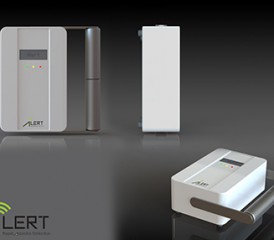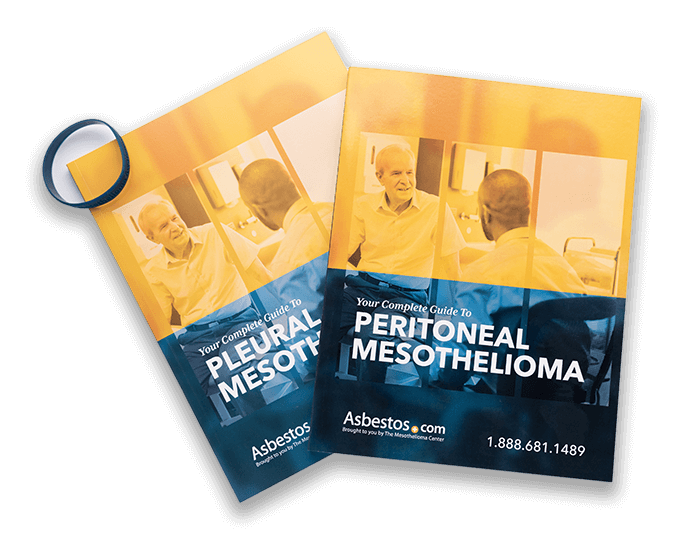Could a New Asbestos-Detecting Device Reduce Mesothelioma Incidence?
Cancer & CaregivingWritten by Michelle Whitmer • Edited By Walter Pacheco
Asbestos.com is the nation’s most trusted mesothelioma resource
The Mesothelioma Center at Asbestos.com has provided patients and their loved ones the most updated and reliable information on mesothelioma and asbestos exposure since 2006.
Our team of Patient Advocates includes a medical doctor, a registered nurse, health services administrators, veterans, VA-accredited Claims Agents, an oncology patient navigator and hospice care expert. Their combined expertise means we help any mesothelioma patient or loved one through every step of their cancer journey.
More than 30 contributors, including mesothelioma doctors, survivors, health care professionals and other experts, have peer-reviewed our website and written unique research-driven articles to ensure you get the highest-quality medical and health information.
About The Mesothelioma Center at Asbestos.com
- Assisting mesothelioma patients and their loved ones since 2006.
- Helps more than 50% of mesothelioma patients diagnosed annually in the U.S.
- A+ rating from the Better Business Bureau.
- 5-star reviewed mesothelioma and support organization.
Testimonials
My family has only the highest compliment for the assistance and support that we received from The Mesothelioma Center. This is a staff of compassionate and knowledgeable individuals who respect what your family is experiencing and who go the extra mile to make an unfortunate diagnosis less stressful. Information and assistance were provided by The Mesothelioma Center at no cost to our family.LashawnMesothelioma patient’s daughter
How to Cite Asbestos.com’s Article
APA
Whitmer, M. (2023, September 29). Could a New Asbestos-Detecting Device Reduce Mesothelioma Incidence? Asbestos.com. Retrieved April 18, 2024, from https://www.asbestos.com/blog/2013/05/10/could-new-asbestos-detecting-device-reduce-mesothelioma-incidence/
MLA
Whitmer, Michelle. "Could a New Asbestos-Detecting Device Reduce Mesothelioma Incidence?" Asbestos.com, 29 Sep 2023, https://www.asbestos.com/blog/2013/05/10/could-new-asbestos-detecting-device-reduce-mesothelioma-incidence/.
Chicago
Whitmer, Michelle. "Could a New Asbestos-Detecting Device Reduce Mesothelioma Incidence?" Asbestos.com. Last modified September 29, 2023. https://www.asbestos.com/blog/2013/05/10/could-new-asbestos-detecting-device-reduce-mesothelioma-incidence/.

Until now, a handheld device that can detect invisible asbestos fibers in real time has evaded scientists. The concept sounds like a magic wand, but the U.K. researchers who have developed the device aren’t wizards, just heroes.
Researchers from the University of Hertfordshire in the United Kingdom are in the final stages of developing the first portable, real-time airborne asbestos detector.
All previous detectors have been able to determine the presence of fibrous minerals but haven’t been able to distinguish asbestos fibers from other fibers. This new device is capable of deciphering asbestos fibers from other mineral fibers like wool, fiberglass and gypsum.
Mesothelioma patient advocates have longed for a way to quickly test for airborne asbestos. A portable, affordable and quick method to detect airborne asbestos has seemed out of grasp for decades despite ongoing research since the 1970s to develop such a device.
The current method to test for airborne asbestos involves collecting an air sample, measuring the amount of captured fibers, and then sending the sample to a testing facility for examination with X-ray technology. The current process is both time-consuming and costly.
Hertfordshire researchers are finalizing the device, which will detect asbestos in real time, meaning on-the-spot results for the workers who need them most.
Repeated exposure to asbestos in the workplace is the leading cause of mesothelioma, a cancer that has no cure. If workers use the device to check for asbestos before, during and after a project, it could save numerous lives in addition to saving countless dollars in medical care.
Lasers and Magnetism Come to the Rescue
The technology relies on a laser and a magnetic field. Asbestos particles contain several metals, including iron atoms that respond to magnetic fields. Because of their iron content, asbestos fibers align themselves when introduced to a magnetic field. This alignment actually produces a detectable pattern that is unique to each type of asbestos. These unique patterns work like thumbprints to identify asbestos.
So what role does the laser play? The laser effectively allows someone to take a picture of the fibers’ unique patterns. Lasers are beams of focused light. Just like a camera needs light to take a picture, the device needs laser light to capture an image of the unique pattern.
Here’s how the device works:
- A sample of airborne particles is collected and exposed to a magnetic field.
- A laser is directed at the sample.
- The light in the laser bounces off the particles and scatters to form unique patterns.
- The resulting patterns are captured and identified.
Depending upon the amount of samples that must be taken (more samples are collected for chrysotile asbestos than for crocidolite asbestos, for example), the presence of asbestos could be determined in several minutes. These fast results are a far cry from the current industry standard, which can take many hours or days.
Coming Soon to a Plumber Near You
Researchers are currently testing the device at known asbestos sites throughout the United Kingdom where asbestos removal or renovation is taking place. In every test of the device thus far, the detector has correctly identified the presence of asbestos.
Continued testing and improvements to the device are underway, and researchers hope to bring the asbestos detector to market in 12 to 18 months. Estimated initial cost for the device is around $700 to $800, and they hope to reduce the price as production increases following the initial product launch. Larger companies will certainly be able to afford the detector, but the goal is to make the device affordable for individual plumbers, electricians, home repair workers and others at risk of asbestos exposure.
In addition to preventing mesothelioma, a real-time asbestos detector could save individual workers and larger companies from paying hefty fines. Millions of dollars in fines have been paid by companies that unknowingly carried out projects without proper asbestos safety measures.
Since technology keeps getting smaller, one can’t help but wonder: Could workers one day wear a headband or wristband that could test for asbestos in seconds?
Would you feel safer if a worker used such a device when performing work on your home? Do you think individual workers will budget for a real-time airborne asbestos detector? Leave a comment below, or visit our Facebook page.




